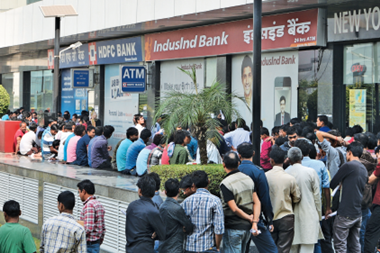China has received enormous amounts of attention recently, particularly with MSCI starting to include China A shares in its global emerging market indices from 1 June.
It could be argued, however, that the whole idea of emerging markets as a separate asset class is past its sell-by date. Lumping together fast-growing Asian countries such as Korea and Taiwan with Latin American strugglers such as Argentina has no real intellectual framework supporting the concept.
Meanwhile China, likely to become the largest economy in the world within the next generation, arguably should be classed as a separate investment destination in its own right.
China is not alone in this regard. India, the other Asian giant, may at some stage come to be regarded by investors in the same vein – but not just yet. India’s better demographics versus China mean it will continue adding to its working age population well beyond 2030, by which time China is expected to be experiencing a declining workforce.
Praveen Jagwani, CEO of Indian fund management group UTI International, says the country remains somewhat in limbo: it is on the verge of success but not quite there yet. India’s medium-term growth prospects remain intact but the short term could be volatile.
Jagwani is a big fan of the changes instituted by prime minister Narendra Modi. The goods and services tax (GST), which came into effect in July last year, has created 55m new corporate taxpayers, while demonetisation, criticised in many quarters, has led to 10m new individual taxpayers, with a third of the new cohort already paying tax. As a result, tax revenues are swelling.
However, India faces an unforeseen challenge in the rise of the oil price to above $80 (€69) a barrel. One of the first things Modi did when he came to power was to abolish government subsidies for the oil price. He was lucky in that this happened during a period of rapidly falling oil prices. Now he faces the challenge of prices rising during an election year – he has to hold national elections before May next year.
Like all emerging markets, India has suffered from the strength of the dollar, with the rupee devaluing 6% so far this year. India’s strong FX reserves give the country security, but foreign investors have been pulling out assets.
Yet the long-term prospects for India look good: India’s latest GDP growth rate, at just over 7%, beats that of China. Moreover, Jagwani says, more significant has been the growth of the manufacturing sector. India has been a laggard in that respect – while its services sectors have excelled, manufacturing has lagged and capacity utilisation in the industrial sector fell to 63% in 2014, having been as high as 90% in the past, even during the financial crisis.
Manufacturing is important because of the sheer number of jobs that it creates. Capacity utilisation increased to 75% according to the last quarter’s figures, which Jagwani argues means the country’s attempts to rebuild manufacturing are succeeding.
Modi launched the “Make in India” initiative in 2014 with the explicit objective of encouraging more manufacturing investment for job creation. In the car sector, capacity utilisation has hit 100% and further capacity is being built. Capacity utilisation in the cement sector has also hit 90%, which Jagwani sees as a predictor of high activity in infrastructure in the coming years.
Jagwani attributes the improvements to two factors: firstly a few years of good monsoons, which enabled wealth to be created and distributed in the lowest 40% of Indian society; and secondly the increased prevalence of banking facilities. This has ensured that the lowest segments of the population can have access to government assistance – in the past, much of this was pilfered by middlemen to an extraordinarily high degree.
Economic prospects for India look good for investors, but the volatility of assets within India is a turn-off: equity markets have fallen this year (down 7% year-to-date in dollar terms), having roared forward after the Modi election.
Investors who are willing to look beyond broad exposures to emerging market indices, face the challenge of how best to ensure exposure to the India story. India’s investment opportunities go far beyond just equities. Government bonds currently yield 7.9% for 10-year maturities, and with inflation at 4.3% real yields are high and uncorrelated with markets elsewhere.
Property, private equity and infrastructure also offer routes to the Indian growth story, although without the liquidity offered by equity and bond markets. Perhaps India novices should look to invest through a multi-asset approach to dampen the volatility.






















No comments yet